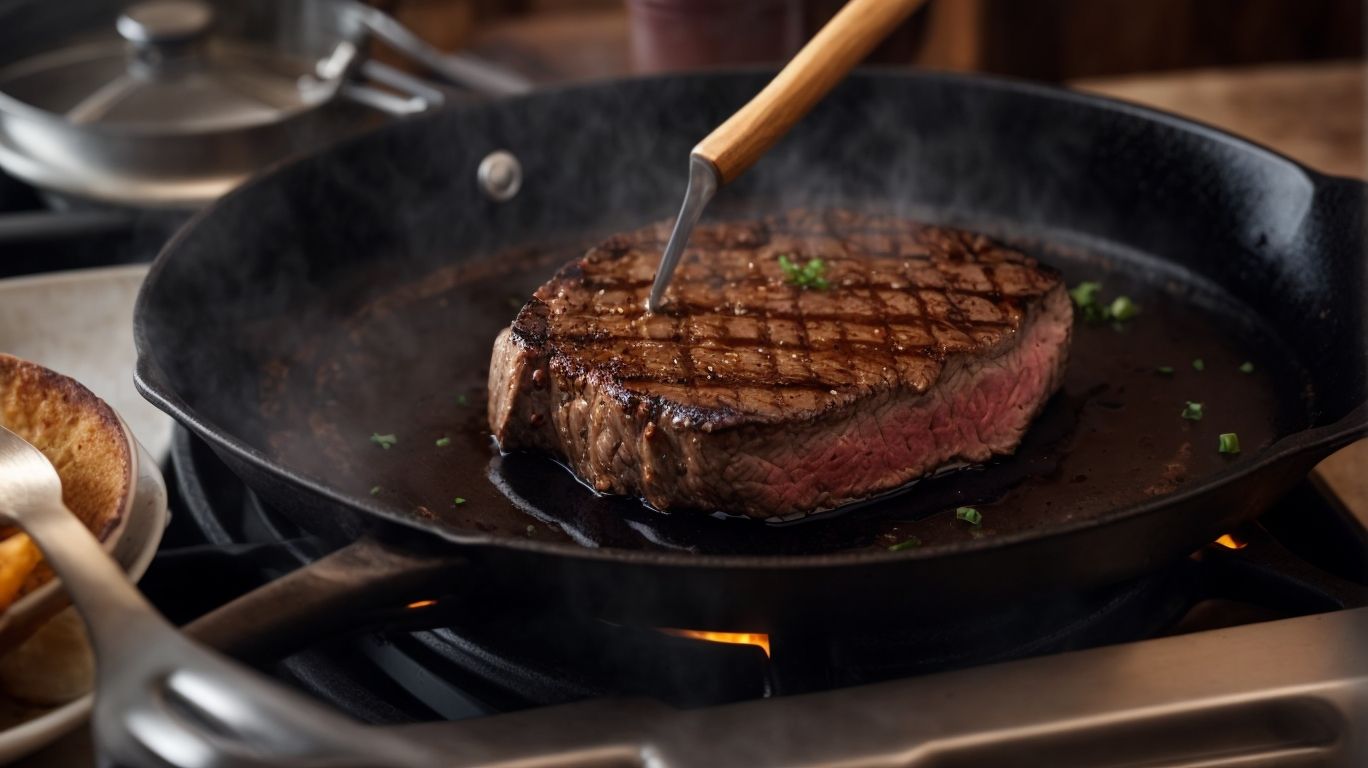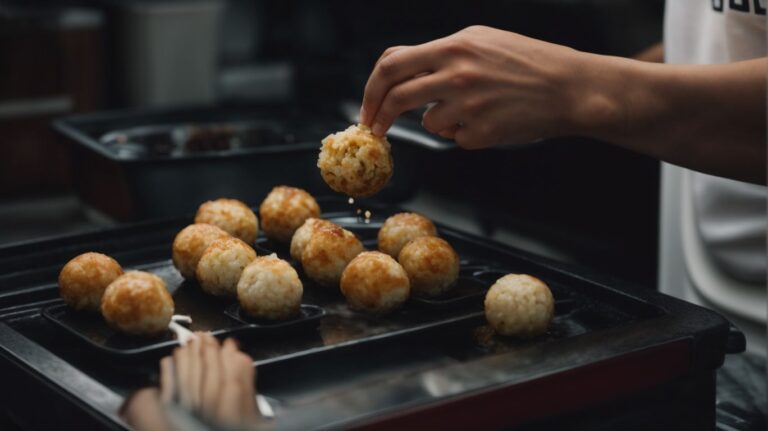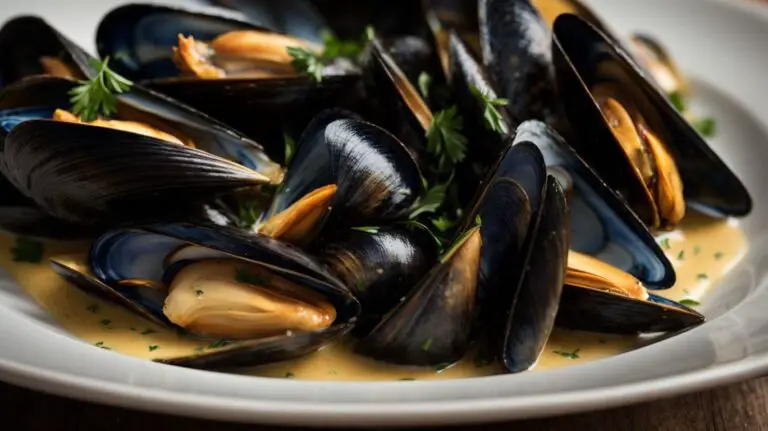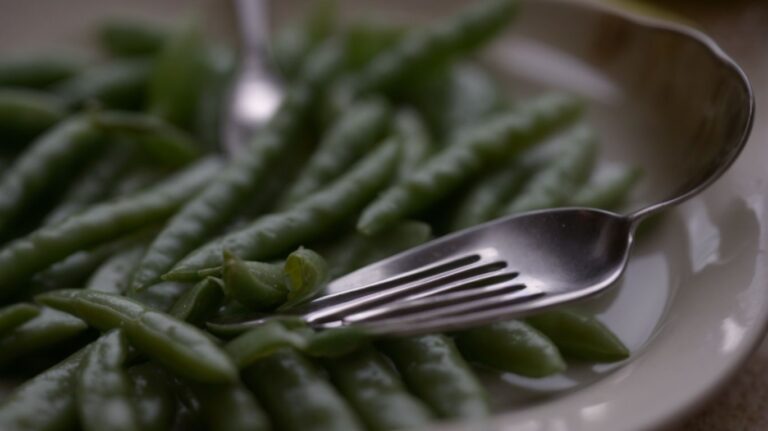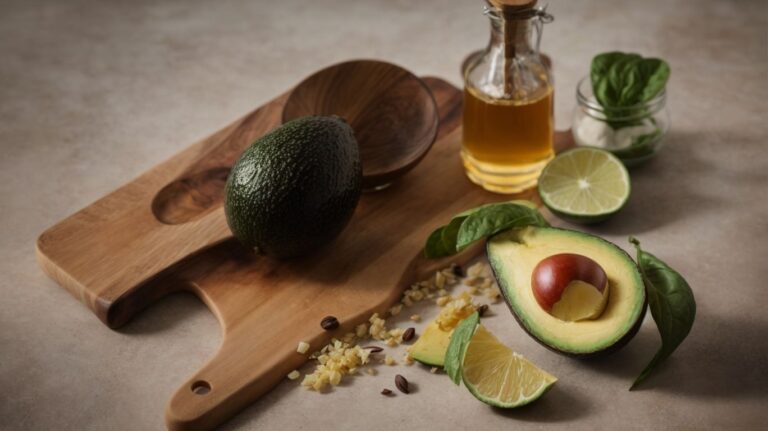How to Cook Steak on Stove Without Cast Iron?
Are you tired of struggling with heavy and high-maintenance cast iron pans when cooking steak on the stove?
In this article, we will explore why you don’t need cast iron to cook a perfect steak and what other pans can be used instead.
From preparing the steak to cooking it to perfection without cast iron, we will provide you with all the tips and tricks you need for a delicious steak dinner.
Stay tuned for expert advice on achieving the perfect steak without the hassle of cast iron!
Key Takeaways:
Why Cook Steak on Stove Without Cast Iron?
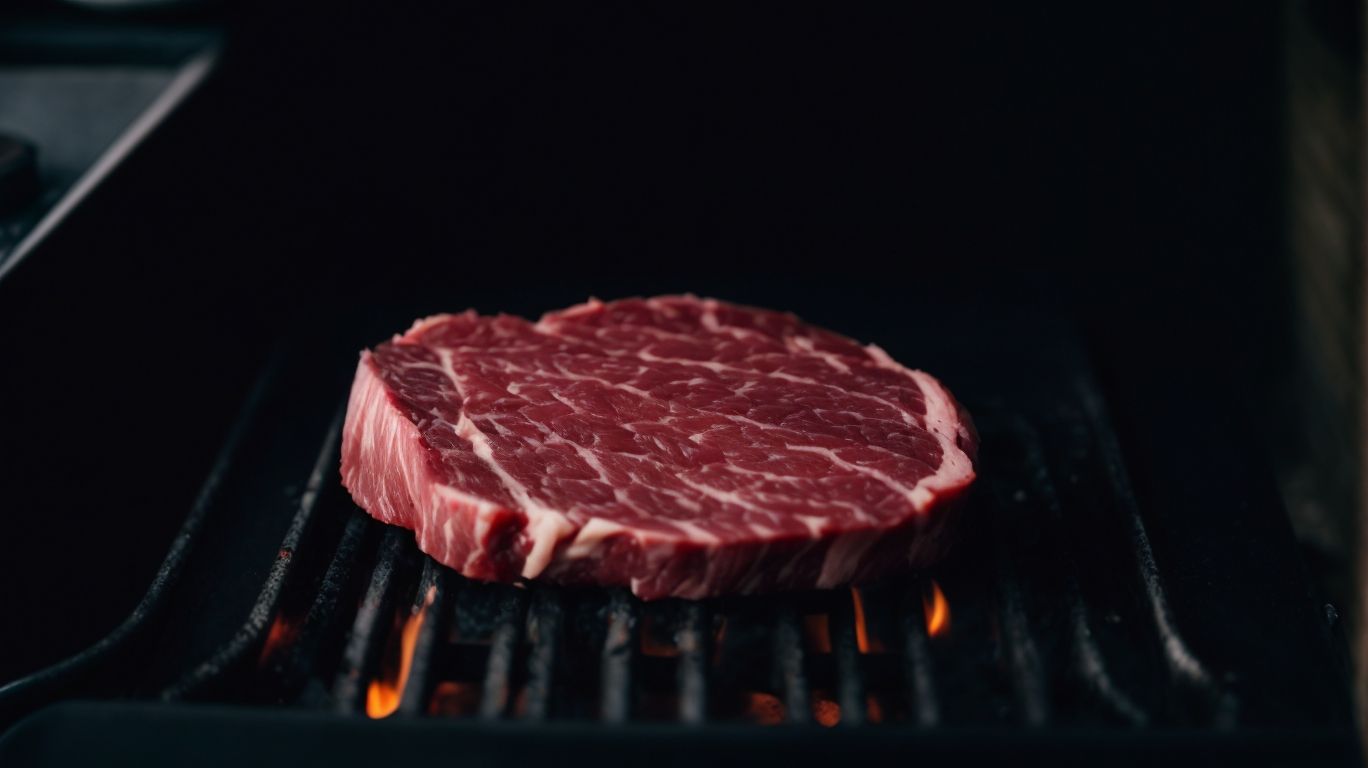
Credits: Poormet.Com – Peter Lee
Choosing to cook steak on the stove without a cast iron skillet offers flexibility and alternative cooking methods for preparing your favorite cuts of meat.
When utilizing a regular skillet, you have the liberty to experiment with various cooking techniques such as pan-searing, reverse-searing, or even finishing the steak in the oven for a perfect medium-rare finish. By not being limited to a cast iron pan, you can adapt your cooking style to suit your preferences and achieve different flavor profiles.
Cooking steak on the stove without a cast iron allows for easier cleanup and maintenance, making it a convenient choice for busy home cooks. The use of stainless steel, non-stick, or enamel-coated pans can also impact the final texture and appearance of the steak, offering a wider range of outcomes to suit individual tastes.
Cast Iron is Heavy and Difficult to Maneuver
One of the primary reasons why some cooks prefer not to use cast iron for cooking steak on the stove is its significant weight, which can make it challenging to handle and move around.
This weight can be particularly cumbersome when trying to flip the steak or adjust it in the pan, leading to potential safety hazards and difficulty in achieving an even sear. The heaviness of cast iron cookware can pose storage challenges as well, especially for those with limited kitchen space. Maneuvering such a weighty pan also requires more effort and dexterity, which may not be suitable for all cooks, especially those with mobility issues.
Cast Iron Requires Special Care and Maintenance
Another consideration is the special care and maintenance that cast iron cookware demands, which may not align with everyone’s kitchen routines or preferences.
One crucial aspect of caring for cast iron pans is the seasoning process, which involves coating the surface with a thin layer of oil to prevent rust and create a natural non-stick surface. This process helps to enhance the flavor of foods cooked in the pan and promotes its longevity.
After each use, it’s essential to clean the pan promptly, using hot water and a gentle scrub brush. Avoid using soap, as it can strip away the seasoning. Instead, dry the pan thoroughly and apply a light coat of oil to protect the surface.
Cast Iron Can Be Expensive
The cost factor is also a deterrent for some individuals when it comes to choosing cast iron for stove-top steak cooking, as high-quality cast iron skillets can be relatively pricey.
It’s important to note that while the initial investment in a quality cast iron pan may be higher, its durability and longevity often make it a cost-effective choice in the long run. When properly cared for, a cast iron skillet can last for generations, providing a reliable cooking surface for countless meals.
For those on a tighter budget, there are more affordable alternatives available, such as stainless steel or non-stick pans. While these may come at a lower upfront cost, they may not offer the same durability or heat retention properties as cast iron, potentially leading to more frequent replacements and higher overall expenses over time.
What Pans Can Be Used to Cook Steak on Stove?
When cooking steak on the stove without a cast iron skillet, you have various alternative options such as stainless steel, non-stick, carbon steel, and copper pans to choose from.
Stainless steel pans are durable and versatile, allowing for even heat distribution and a non-reactive cooking surface that won’t alter the flavor of the steak.
Non-stick pans are great for easy cleanup and require less oil, but may not achieve the same level of searing as other materials.
Carbon steel pans are excellent for achieving a deep sear and are lightweight for easier handling.
Copper pans offer exceptional heat conductivity, making them ideal for precise temperature control and searing perfection.
Stainless Steel Pan
A stainless steel pan offers even heat distribution and durability, making it a popular choice for cooking steak on the stove without a cast iron skillet.
Stainless steel pans are excellent for achieving that coveted crispy sear on your steak while locking in maximum flavor. With their superior heat retention capabilities, these pans ensure that your steak cooks evenly, preventing hot spots that can result in unevenly cooked meat.
The longevity of stainless steel pans is unparalleled, providing you with a reliable cooking tool that will withstand the test of time in your kitchen. This durability means you can sear, flip, and cook your steak to perfection without worrying about the pan warping or losing its efficacy over time.
Non-Stick Pan
A non-stick pan provides easy cleanup and requires minimal oil, offering a convenient option for cooking steak on the stove without the need for a cast iron skillet.
When cooking steak on a non-stick pan, the non-stick properties ensure that the meat doesn’t stick to the surface, making it easier to flip and cook evenly. This feature not only saves you from the hassle of dealing with stuck-on food but also promotes a healthier cooking method by reducing the need for excessive oil. The minimal oil requirement not only makes your steak less greasy but also cuts down on unnecessary fat intake, making your meal a more nutritious choice. The non-stick surface makes cleanup a breeze, allowing you to spend less time scrubbing and more time enjoying your delicious steak.
Carbon Steel Pan
A carbon steel pan offers excellent heat retention and a naturally non-stick surface, making it a versatile option for achieving restaurant-quality sear on steak without a cast iron skillet.
One of the key advantages of using a carbon steel pan for stove-top steak preparation is its remarkable heat conductivity. This quality allows the pan to heat up quickly and evenly, ensuring that your steak cooks consistently. The ability of carbon steel to retain heat makes it perfect for achieving that coveted sear on the outside of your steak while keeping the inside juicy and flavorful.
Another benefit is the seasoning capability of carbon steel pans. Over time and with proper care, these pans develop a natural, non-stick patina that enhances the flavors of your steak and creates a barrier against sticking.
The searing capabilities of carbon steel pans are exceptional. They can reach high temperatures quickly, allowing you to achieve that delicious caramelization on your steak, giving it a professional-looking finish.
Copper Pan
A copper pan offers rapid heat conductivity and precise temperature control, making it a premium choice for cooking steak on the stove with finesse and control.
Regarding stove-top steak cooking, the quick heating properties of a copper pan are unparalleled. The pan heats up swiftly and evenly, ensuring that your steak cooks evenly and efficiently. Its temperature responsiveness allows you to adjust the heat instantly, giving you complete control over the cooking process. This level of culinary precision is perfect for achieving that ideal sear on your steak while locking in all the juices, resulting in a flavorful and tender piece of meat.
How to Prepare the Steak for Cooking?
Properly preparing the steak before cooking is crucial for enhancing its flavors and ensuring optimal results on the stove without a cast iron skillet.
Begin by taking the steak out of the refrigerator and letting it sit at room temperature for about 30-60 minutes. This helps the steak cook more evenly.
While the steak is coming to room temperature, this is the perfect time to season it. Use a generous amount of salt and black pepper on both sides, making sure to press the seasoning into the meat. Consider incorporating other spices or a dry rub for added flavor complexity.
Seasoning the Steak
Seasoning the steak with a blend of herbs, spices, and oils adds depth of flavor and enhances the taste profile before cooking it on the stove without a cast iron skillet.
For a classic approach, a combination of salt, black pepper, garlic powder, and a dash of smoked paprika can create a savory base. You can experiment with adding dried herbs like thyme, rosemary, or oregano for an earthy essence, or kick up the heat with cayenne pepper or chili flakes.
For a richer flavor, consider a marinade using soy sauce, Worcestershire sauce, honey, and olive oil to bring out the umami notes of the steak. Letting the seasoned steak sit in the marinade for at least 30 minutes, or preferably overnight, allows the flavors to penetrate the meat deeply, ensuring a juicy and flavorful outcome.
Bringing the Steak to Room Temperature
Allowing the steak to come to room temperature before cooking promotes even cooking and optimal results when using alternative pans on the stove instead of a cast iron skillet.
Bringing the steak to room temperature is a crucial step that should not be overlooked, as it sets the foundation for a well-executed dish. By allowing the steak to sit at room temperature, it helps the meat cook more evenly throughout, ensuring that each bite is consistently cooked to perfection. This temperature adjustment also plays a significant role in retaining the rich flavors of the meat, as cold meat tends to react differently during the cooking process, potentially diminishing the overall taste and texture.
Bringing the steak to room temperature aids in tenderizing the meat, making it more succulent and easier to chew once it hits the pan. This simple technique can elevate the entire cooking experience, resulting in a mouthwatering steak that is juicy, flavorful, and tender. So, the next time you prepare to cook steak on the stove, remember the importance of allowing it to reach room temperature for exceptional results.
Patting the Steak Dry
Patting the steak dry with paper towels helps achieve a good sear and prevents excess moisture during the cooking process on the stove without relying on a cast iron skillet.
By removing excess moisture from the surface of the steak, you create the ideal environment for a beautiful caramelized crust to form when it hits the hot pan. This initial step is crucial as excess moisture can lower the temperature of the cooking surface, hindering the Maillard reaction that gives the steak its characteristic flavor and color. By patting the steak dry before cooking, you enhance the contact between the meat and the hot surface, allowing for efficient browning and flavor development.
How to Cook the Steak on Stove Without Cast Iron?
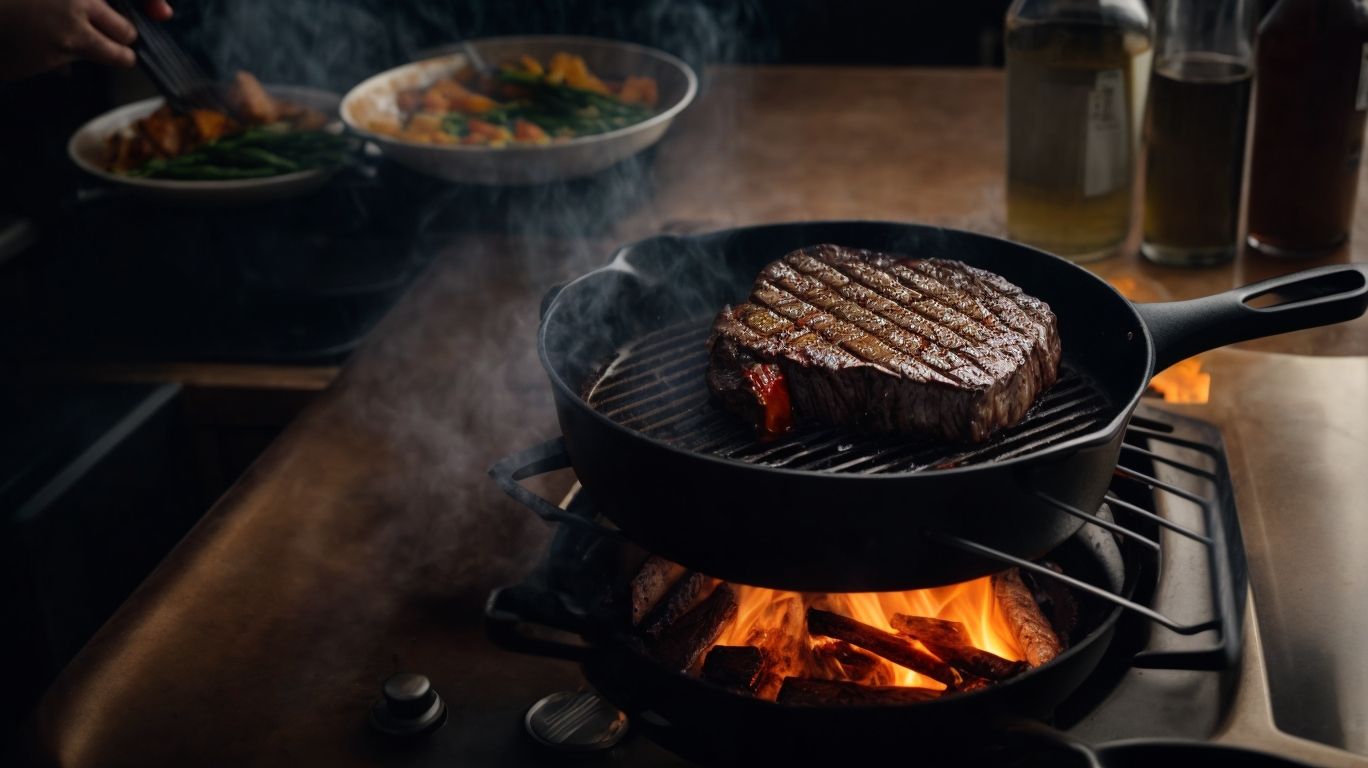
Credits: Poormet.Com – Gabriel Garcia
Mastering the art of cooking steak on the stove without a cast iron skillet involves precise techniques such as preheating the pan, achieving a perfect sear, and finishing the steak in the oven for optimal results.
When opting for alternative pans like stainless steel or non-stick, it’s crucial to preheat your pan over medium-high heat to ensure a consistent cooking surface. Once properly preheated, add a high smoking point oil like avocado or canola to enhance the searing process. Place the steak in the pan, ensuring it’s not overcrowded to allow for even cooking.
For the perfect sear, resist the temptation to move the steak around too much; let it develop a nice crust on one side before flipping. Use a pair of tongs to flip the steak and sear the other side to your desired level of doneness.
Once seared, transfer the steak to a preheated oven-safe dish or skillet and finish it off in the oven, allowing the gentle heat to cook the steak to perfection without overcooking the exterior.
Preheating the Pan
Preheating the pan to the right temperature ensures a good sear and even cooking when preparing steak on the stove without a cast iron skillet.
Not only does preheating the pan help in achieving that perfect sear on the steak, but it also plays a crucial role in ensuring that the meat cooks evenly throughout. When the pan reaches the ideal temperature, usually indicated by a light smoke starting to rise from the surface, it creates a non-stick surface that prevents the steak from sticking and allows for easy flipping. This step is essential for stove-top cooking as it impacts the overall taste and texture of the steak, making a remarkable difference in the juiciness and tenderness of the final dish.
Searing the Steak
Achieving a perfect sear on the steak involves high heat, proper timing, and frequent turning for consistent browning when using alternative pans on the stove without a cast iron skillet.
When searing steak on the stove, it’s crucial to preheat the pan properly to ensure an even sear. Start by selecting a heavy-bottomed pan such as stainless steel or carbon steel. Place the pan on the stove over medium-high heat and allow it to heat up thoroughly. Once the pan reaches the ideal temperature, add a thin layer of high smoke point oil like grapeseed or avocado oil.
Once the oil is shimmering but not smoking, carefully place the steak into the pan. It should produce a satisfying sizzle upon contact, indicating that the heat is high enough to sear the meat quickly. Avoid overcrowding the pan to allow proper heat circulation and prevent steaming instead of searing.
Finishing the Steak in the Oven
Finishing the steak in the oven allows for controlled doneness and resting, ensuring a restaurant-style steak experience when cooking on the stove without a cast iron skillet.
By transferring the seared steak to the oven, you can easily achieve the desired level of doneness, whether it’s rare, medium-rare, medium, or well-done, without the risk of overcooking on the stove. This method also enhances the flavor profile of the steak, with the oven heat gently enveloping the meat for a more even cooking process and caramelization of the exterior.
Letting the steak rest in the oven after cooking helps the juices redistribute within the meat, leading to a juicier and more tender final result. This crucial resting period allows the steak to relax and retain its juices, creating a melt-in-your-mouth texture that is truly unmatched.
How to Know When the Steak is Done?
Determining the steak’s doneness is essential for achieving the perfect results when cooking on the stove without a cast iron skillet, whether through the use of a meat thermometer or a touch test.
When using a meat thermometer to check doneness, insert it into the thickest part of the steak without touching the bone for an accurate reading. For rare steak (120-130°F), the center of the meat will be warm and very red. Medium steak (140-150°F) will have a pink center and firmness, while well-done steak (160-170°F) will feel very firm.
Alternatively, if you prefer the touch test method, compare the texture of the meat to parts of your hand to determine doneness. The fleshy part of your thumb corresponds to rare, your index finger to medium-rare, middle to medium, ring finger to medium-well, and pinky to well-done.
Using a Meat Thermometer
Utilizing a meat thermometer ensures precise temperature readings for achieving desired levels of doneness when preparing steak on the stove without relying on a cast iron skillet.
When using a meat thermometer, it’s crucial to insert the probe into the thickest part of the steak without touching bone or fat to get an accurate reading. This method helps avoid overcooking or undercooking, ensuring a perfectly cooked steak every time. By monitoring the internal temperature, you can hit the sweet spot for rare, medium-rare, medium, or well-done steak, catering to everyone’s preferences. Remember, the USDA recommends specific temperature ranges for safe consumption, so following these guidelines is essential for a delicious and safe dining experience.
Using the Touch Test
The touch test provides a tactile method of determining steak doneness by assessing the firmness and springiness of the meat, offering a hands-on approach to cooking steak on the stove without a cast iron skillet.
When using the touch test to evaluate steak doneness, you can rely on sensory cues to guide you through the cooking process. For a rare steak, a gentle touch should result in a steak that feels soft and squishy, indicating it’s still raw inside. Moving towards medium-rare, you should expect a bit more resistance as you press down on the meat, with a slight bounce-back for that perfect doneness.
Medium and medium-well steaks will feel firmer to the touch, but not overly tough, signaling a gradual progression towards more cooked meat.
Tips for Perfectly Cooked Steak on Stove Without Cast Iron
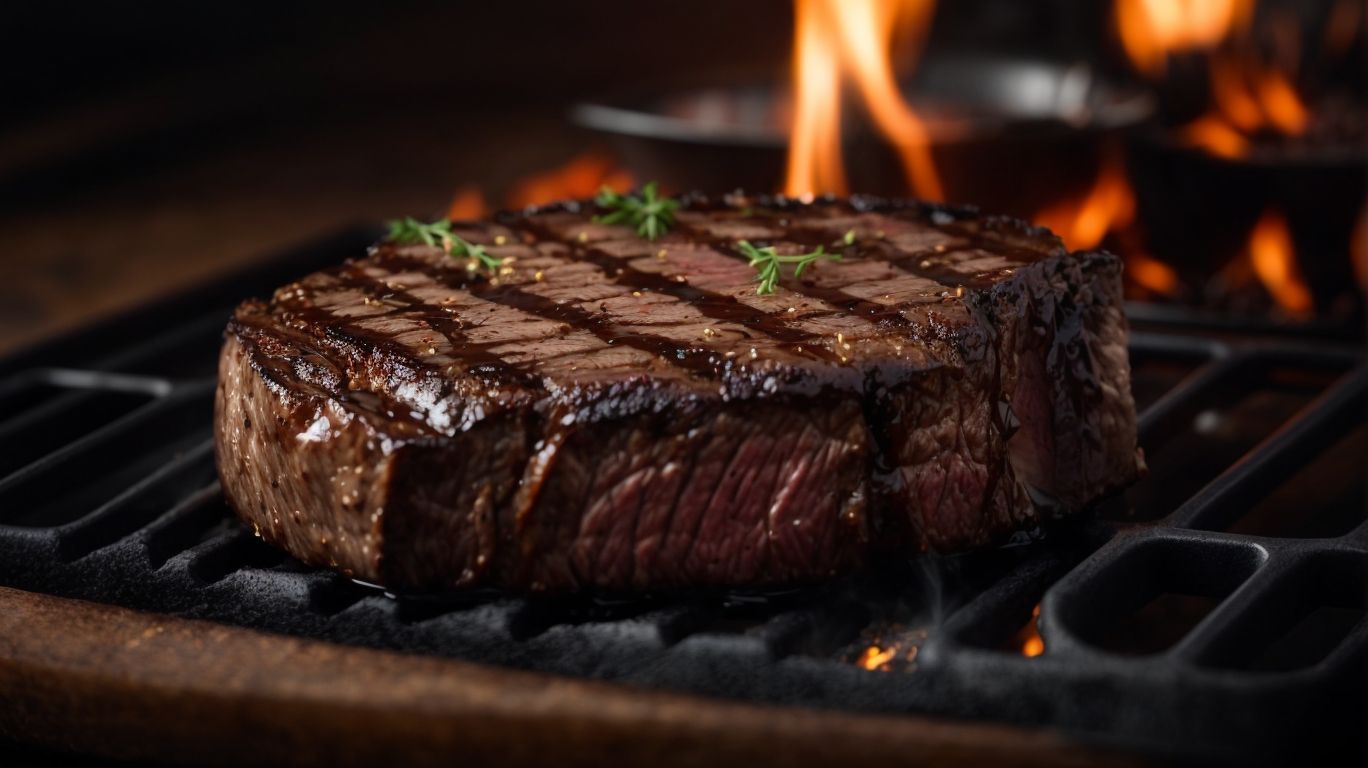
Credits: Poormet.Com – Mark Rivera
Achieving a perfectly cooked steak on the stove without using a cast iron skillet requires attention to detail and adherence to key tips such as letting the steak rest, using high-quality meat, avoiding pan overcrowding, and experimenting with various seasonings.
One of the most crucial aspects of cooking steak on the stove is the resting period after cooking, which allows the juices to redistribute, resulting in a more tender and flavorful steak. The choice of meat is paramount; opt for cuts like ribeye or filet mignon for the best results. Proper pan management is essential – ensure the pan is hot enough before adding the steak and avoid overcrowding the pan to achieve a nice sear.
Variety in seasonings can elevate the flavor profile of your steak, so don’t hesitate to try different rubs or marinades.
Let the Steak Rest Before Cutting
Allowing the steak to rest after cooking preserves its juices and enhances the flavors, ensuring a tender and succulent dining experience when prepared on the stove without a cast iron skillet.
When you let the cooked steak rest, you are helping the meat molecules to relax and redistribute their juices evenly, preventing a rush of liquid when you cut into it. This essential step not only aids in moisture retention but also allows time for the flavors to meld together, creating a harmonious taste profile.
The resting period plays a vital role in the texture improvement of the steak. During this phase, the proteins in the meat have time to reabsorb the moisture, resulting in a more tender and juicy final dish. By allowing the steak to rest adequately, you are essentially giving it the chance to reach its full potential in terms of taste and tenderness.
Use High-Quality Meat
Selecting high-quality meat with good marbling ensures a premium dining experience and flavorful outcome when cooking steak on the stove without relying on a cast iron skillet.
Marbling, the white intramuscular fat distributed throughout the lean muscle, plays a crucial role in elevating the tenderness, juiciness, and overall taste of steak cuts. Opting for well-marbled meat, such as ribeye or New York strip, ensures a tender texture and intense beefy flavor once cooked to perfection on the stovetop. The intricate marbling pattern not only enhances the meat’s succulence but also provides a visually appealing presentation that signifies quality and culinary expertise. When seared over high heat, marbled steaks develop a beautiful crust and luxurious melt-in-your-mouth experience, delighting the taste buds of steak enthusiasts.
Don’t Overcrowd the Pan
Avoiding overcrowding the pan allows for proper heat circulation, even searing, and optimal flavor development when cooking multiple steaks on the stove without using a cast iron skillet.
When you overcrowd the pan, the steaks end up steaming rather than searing due to the accumulated moisture. This not only impacts the Maillard reaction responsible for flavor development but also leads to uneven cooking. By ensuring adequate space between steaks, each piece can develop a beautiful crust while retaining those savory juices within. Properly spaced steaks also promote efficient heat transfer, preventing them from cooling down the pan excessively, thus maintaining the desired cooking balance.
Experiment with Different Seasonings and Marinades
Exploring a variety of seasonings and marinades can introduce new flavors and culinary dimensions to stove-top cooked steak without the need for a cast iron skillet, allowing for creative expression and taste diversity.
When experimenting with different seasonings, consider using herb-infused oils such as rosemary or garlic for a fragrant aroma or trying out bold mixes like Cajun or Mexican spice blends for a kick of heat. To further enhance the flavor profile, you could also opt for citrus-based marinades for a zesty touch or challenge your taste buds with Asian-inspired sauces like teriyaki or hoisin. The possibilities are endless, offering a playground for culinary innovation and personal touch in each steak dish.
Frequently Asked Questions
Can I cook a steak on the stove without a cast iron skillet?
Yes, you can still achieve a perfectly cooked steak on the stove without a cast iron skillet. There are a few alternative methods you can use.
What other types of pans can I use to cook steak on the stove?
For a similar result to a cast iron skillet, you can use a heavy-bottomed stainless steel or carbon steel pan. Non-stick pans are not recommended as they do not get hot enough to sear the steak properly.
What should I do if I don’t have a meat thermometer?
If you don’t have a meat thermometer, you can use the “finger test” to check the doneness of your steak. Gently press the center of the steak with your index finger and compare the firmness to different parts of your hand.
Do I need to marinate the steak before cooking?
Marinating is not necessary, but it can add flavor to your steak. If you choose to marinate, make sure to pat the steak dry before cooking to avoid steaming it instead of searing.
Can I use a gas or electric stove?
Yes, you can use both gas and electric stoves to cook steak. The key is to make sure your pan gets hot enough to sear the steak properly. Consider preheating the pan for a few minutes before adding the steak.
What is the best temperature for cooking steak on the stove?
For a medium-rare steak, the internal temperature should be around 135°F. However, this can vary depending on the thickness of your steak and personal preference. It’s best to use a meat thermometer to ensure the steak is cooked to your desired level of doneness.

